Indochina, which was originally termed Indo-China, consists of the countries in Southeast Asia now known as Cambodia, Laos, Myanmar (formerly Burma), Thailand, and Vietnam. The countries are all within the sphere of influence of the Indian subcontinent and China, and also included part of Malaysia and Singapore in the original designation. Later, the term Indochina was used to refer to the French Indochina region that covered just Cambodia, Laos, and Vietnam, until each was recognized as an independent nation in the 1950s.

A tour of the five countries that now make up Indochina Tours is an adventure of epic proportions, with amazing sights and cultures that date back more than two thousand years, and which are guaranteed to leave you yearning to come back for more.
When is the Best Time to Take an Indochina Tour?
Since Indochina covers five separate countries, planning when to take the tour can be complicated, and the reasons to visit and the weather must also be taken into consideration. All of the countries, however, do have the same distinct wet and dry seasons, although regional variations do occur. Normally, the wet season runs from May to October and the dry season is from November to April.
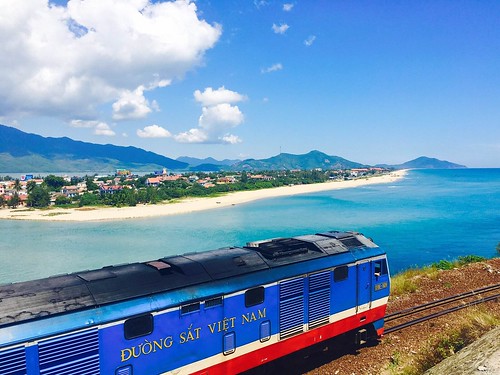
In Vietnam, the weather can be split into three distinct regions, from north to south. In the far north, the weather follows a colder pattern, with the dry season in the region getting very cold in December and January and the wet season starting earlier in April. In the central region, the weather is hot and dry from January to late August, and the wet season occurs from September to December. Southern Vietnam experiences constant temperatures all year round, with May to November being the wet season.
In Myanmar, the best time to visit is from November to February, when the days are warm and dry, although there is still not much rain in the wet season, and it normally falls in the afternoon. The green months either side of the high season period is also a great time to visit if you are looking for a more peaceful trip.
Laos has its peak travel season in the dry months, from November to April. Similarly, Laos does not have endless days of rain even in the peak of the monsoon season, and rain rarely lasts more than an hour or two, leaving the rest of the day free for exploring.
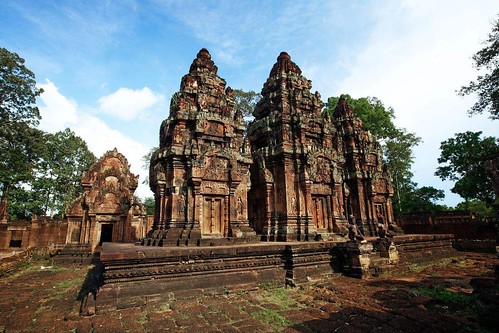
Cambodia has what is considered to be one of Asia’s simplest weather systems. The entire country experiences the same wet and dry seasons, with the wet season from May to late September and the dry season from October to April. With such a long dry season, the tourist season in Cambodia is much longer, and even at the coldest time of year it is rarely below 24 degrees. The monsoon season is also relatively light, with showers normally in the late afternoon and evening, making Cambodia an all-year tourist destination.
Thailand has a dry season that runs from November to May across the country, and wet season that varies from region to region, IN the north, the wettest months are from June to October, with cooler temperatures, while in the south the monsoon season can be split into two. On the west coast, the wettest months are from April to October while on the east coast the most rainfall happens from September to December. Dry and sunny weather is the order of the day for the rest of the year across the country.
Top Destinations You Should Never Miss As A First Time Traveler
For the first time visitor to Indochina, there are definitely places that you do not want to miss out on, and which are the main attractions of any tour within the five countries.
Vietnam
Ho Chi Minh City
Sitting on the banks of the Saigon River, Ho Chi Minh City (formerly Saigon) is a bustling city that offers amazing sights and adventures. Replete with markets both night and day, trendy bars and nightclubs, and several museums and historic sites, this beautiful city is the shining gem of the nation, and is a flurry of color and activity almost 24 hours a day.

Hue
The former capital of Vietnam, Hue has some of the nation’s most impressive historic monuments, including the ancient Imperial City, the scenic Perfume River, and much more. Inside the Imperial City are dozens of ornate gardens, ancient imperial temples, and the tombs of the ancient emperors. And there is the renowned Hue Festival, which is held every two years and is a celebration of Vietnamese culture, history, art, and food. Hue is also well known for its Vietnamese cooking schools, where you can enroll for day courses and learn the delights of the local cuisine.
Hanoi
Hanoi is the modern-day capital of Vietnam, and it is a city that blends the eastern and western cultures in one beautiful place. The Cho Hum Market, just outside the city is one of the best places to visit for interesting fabrics and intricate treasures, but the best part of Hanoi is the food. All over the city are small vendors selling local street foods at ridiculously low prices, and which will delight and entice your taste buds. The most popular dish is always the Vietnamese Pho (pronounced “fur”), which is a delicious dish of noodles and soup served with either beef or chicken.
Cambodia
Phnom Penh
The capital of Cambodia, and one of the most beautiful cities, Phnom Penh is filled with wonders and delights that will leave you breathless. While the Royal Palace and the National Museum are two of the most interesting places to visit, the country has not shied away from its violent past, and has embraced the more recent history of the Pol Pot genocide in order to show the way forward and avoid such troubles in the future. The Toul Sleng genocide museum is a gruesome and grisly place to visit, but is filled with amazing artifacts and interesting information about the country’s worst period of history.
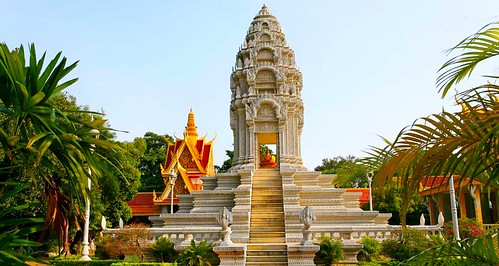
Angkor Archaeological Park
In the far north of the country, not far from Siem Reap, lies the ancient temple complex of Angkor. A vast area filled with hundreds of ancient temples, some in good condition and others complete ruins overrun by the dense jungle, Angkor is a must-visit place on almost every visit to Cambodia, be it your first or fiftieth. Decorated with beautiful sculptures and dating back over 1,200 years, the Angkor Complex is a delight that will take you decades to explore.
Tonle Sap
Lying in the midst of five separate provinces of Northwest Cambodia, Tonle Sap Lake is the largest body of water in the country. With over three million inhabitants that live around its huge circumference, many of which have built houses actually on the lake itself, it is a peaceful and tranquil place where the hustle and bustle of the cities never interferes. The lake is not just a tourist spot, but a major resource in Cambodia, providing more than half of the fish consumed in the country. Many people live on the floating villages out on the surface of the lake, where the only way to get to shore is in one of the leg-propelled fishing boats that ply their trade across the lake.
Laos
Vientiane
Lying in the inside of a huge bend of the Mekong River, Vientiane is Asia’s most modest capital city. While it may lack the buzz and bustle of Ho Chi Minh City or Bangkok, it has its own unique charm in the charming streets filled with French-Indochinese buildings, herbal saunas and delightful spas, and the delightful banks of the Mekong River, where you can relax on a boat and enjoy the peace and tranquility of this unassuming capital city.
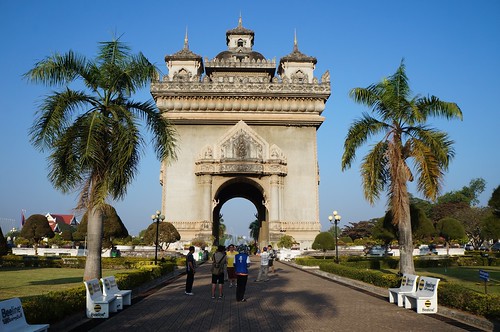
Vang Vieng
To the far north of Vientiane lies the town of Vang Vieng, set in a glimmering landscape of green rice fields and sharp-edged karst hills. Renowned for its adventure activities, you can delve into the depths of the earth on a caving expedition, kayak down the local rapids, or dangle hundreds of feet in the air on a rock-climbing adventure. or, if that is just too much, you can take long relaxing walks around what is considered the most beautiful countryside in Laos.
Luang Prabang
While time may have ravaged the French colonial shophouses and ancient gilded temples, Luang Prabang has a majesty that is spellbinding and makes this one of the most enticing destinations in Laos. A growing tourist destination, you can get off the beaten tourist track and explore the old, dusty side streets or take a day trip to the sacred Pak Ou Caves to see the thousands of Buddha images that fill the grottoes and the stunning Khouang Si Waterfall, where you can take a refreshing swim on a hot day.
Myanmar
Bagan
If there is one place in Myanmar that you should visit, then it has to be the ancient temple complex at Bagan. The capital of the ancient Bagan Empire, this massive city complex of temples and palaces is comparable to the legendary Angkor Complex. While Angkor has the larger structures, the sheer number of structures at Bagan far outweighs it in terms of awesomeness. The landscape is filled with temples, palaces, and pagodas, and as the sun sets in the west, it provides an astounding and breathtaking scene across the plains.
Yangon
Formerly known during the British colonial days as Rangoon, Yangon is not just the capital and main gateway into Myanmar, but is one of the most fascinating cities to explore. Its main attraction is the stunning Shwedagon Pagoda, sitting right in the center of the city, with its gold and diamond encrusted spire standing tall above the capital, and visible from almost every part of the city. Inside the city center are even more pagodas to explore, and a wealth of British colonial buildings that have stood the test of time.

Kyaikhtiyo
Just a few hour’s drive south of Yangon lies the famous mountain of Kyaikhtiyo, with its gravity-defying golden boulder. Known as the Golden Rock Pagoda, for the stupa that was built on top of the giant round rock, this miracle of nature is perched on the very edge of a cliff at the top of the mountain, defying gravity, wind, and rain in its millennia-long placement. A sacred site for Buddhism, it is the end of a journey for thousands of pilgrims who come to pray at the rock every year.
Thailand
Bangkok
One of the most popular destinations of all time in Southeast Asia, Bangkok is a must-see destination for lovers of busy, sleepless cities. The city is the thriving heart of Thailand, and one of the most diverse in Asia in terms of people. Adorned with hundreds of massive skyscrapers, and with streets crammed with people and traffic, the city is best seen using the efficient MRT and BTS rail networks, which cover the entire city. Thailand is known as the “Land of Smiles” - and in Bangkok, you can understand why.
Chiang Mai
In the far north of Thailand lies the ancient city of Chiang Mai, which is a popular destination for nature lovers and those who like the slow lifestyle that is found there. A relaxed and pleasant city, you can go on night safaris to discover the nocturnal creatures of the forests, or spend a day at the Tiger Kingdom, where you can see the huge tigers taking their daytime naps in the shade of the trees in their jungle habitat. You can also find elephants everywhere, and not just in the wildlife preserves. in Chiang Mai, elephants are everywhere, on statues, temples, houses, and even on cars, bikes, and key chains. The elephant is the national symbol of Thailand, and a visit to the elephant sanctuary is the highlight of any trip to the north.
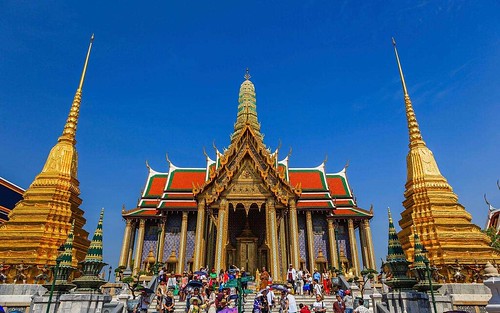
Ready to go?
In actuality, there is a lot to do on an Indochina tour, and planning the details can take a lot of time. And time is something that you will need during the tour as well, since you cannot visit all five countries within a few short weeks. but if time is not on your side, and you really want to travel to all five countries in Indochina, then taking in the top sites on your first visit will give you an awesome insight into this beautiful and sometimes mystical part of Asia. There is no doubt that you will return, because once you are bitten by the Asian tourism bug, there is no getting over it.
Pin for later:

